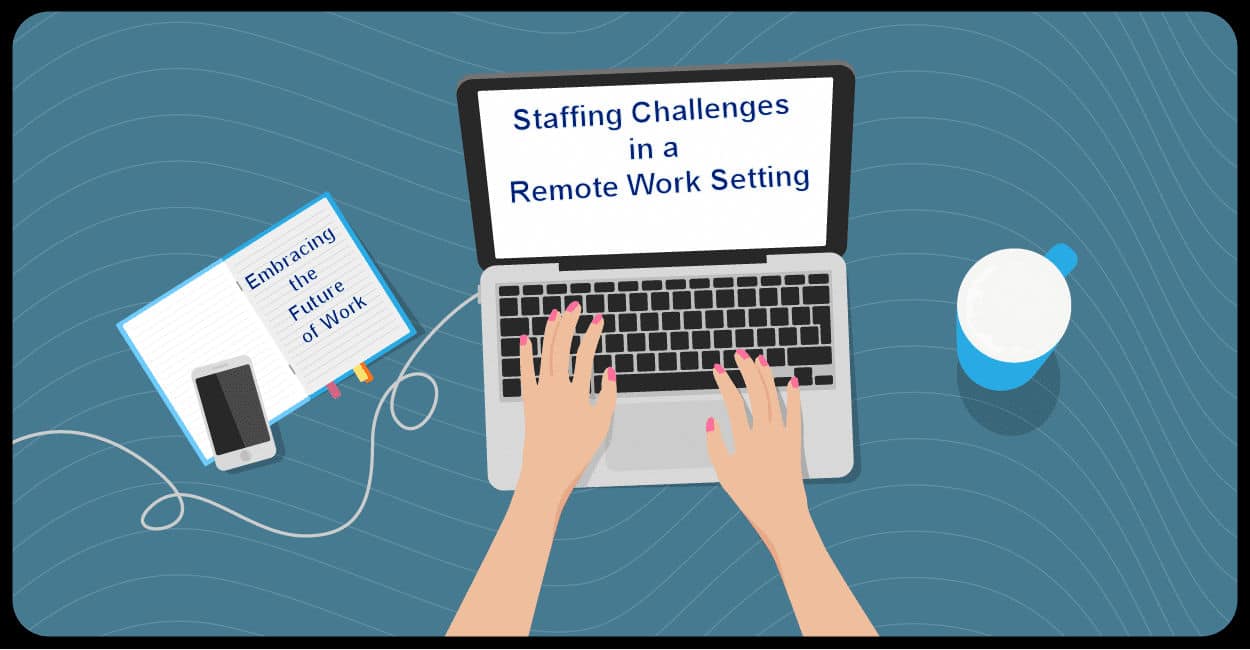In this era of work, the increasing popularity of remote work is transforming how organizations approach staffing.
The flexibility and convenience it offers have made remote work a choice for both employers and employees. However, with these advantages come challenges that organizations must tackle to recruit, assess and oversee remote talent.
This article delves into the outlook of remote work and offers insights into overcoming staffing hurdles in a decentralized setup.
The Evolving Staffing Landscape
The traditional concept of a workforce confined to office spaces is swiftly changing. Remote work has transcended being just a trend; it signifies a shift in our work dynamics. Organizations are no longer constrained by geographic boundaries in sourcing talent.
Remote work enables access to a pool of skilled professionals globally and empowering companies to harness varied talent resources and foster innovation.
Strategies for Recruiting Remote Talent
To adequately address staffing obstacles in a remote work environment organizations need to revamp their recruitment strategies.
Conventional methods may fall short in todays digital age. Embracing global platforms, freelance marketplaces and remote job portals can help widen the talent pool for selection.
Using search algorithms globally and AI powered tools can help recruiters streamline the screening process making it easier to spot remote talent efficiently.

Screening Remote Candidates
Evaluating remote candidates requires a different approach compared to face-to-face interviews. While technical skills are essential it’s equally crucial to assess a candidate’s adaptability in a remote work environment.
Seek out individuals with communication abilities, self-discipline and the capacity to work autonomously. Conducting interviews and simulations can offer insights into a candidate’s suitability for remote work.
Efficient Management of Remote Teams
Once remote employees are onboarded effective management becomes key. Establishing lines of communication and setting expectations is vital for promoting teamwork and productivity.
Utilize project management tools, video conferencing platforms and collaboration software to keep teams connected and engaged.
Encourage check ins. Create opportunities for virtual team building exercises to foster a sense of unity.
Tackling Communication and Collaboration Hurdles
Communication gaps and feelings of isolation are obstacles in remote work setups. Proactively tackle these challenges by establishing communication routines defining objectives and offering ample chances, for team interaction.
Promote transparent communication to ensure everyone feels valued. Cultivate an environment of trust and mutual support to bridge the gap created by distance.

Keeping Company Culture Intact in a Scattered Work Environment
Ensuring a company culture remains crucial when dealing with a remote workforce. Utilize technology to establish spaces that enable employees to interact exchange ideas and commemorate achievements.
Arrange team building activities, workshops and training sessions to uphold principles and nurture a sense of belonging. Set an example by fostering inclusivity, teamwork and a culture of learning.
Conclusion
The future of work is undoubtedly shifting towards remote work, prompting organizations to adjust for success in this evolving landscape.
Embracing remote work and implementing effective methods for recruiting, evaluating and managing remote talent can help businesses fully leverage the advantages of a dispersed workforce.
Tackling obstacles like communication, collaboration and upholding company values demands solutions, flexibility and dedication to establishing meaningful connections in a digital environment.
With the right approach remote work can drive innovation, progress and triumph in today’s remote work environment.


